Girlfriend Mobile notification track
Mobile Control provides a comprehensive set of features designed to assist parents in monitoring and managing their children’s digital activities responsibly. Key features include:
Social Content Detection: Notifies parents about potentially harmful content on social media, allowing for customization of keywords and real-time alerts.
Activity Reports: Offers insights into screen time, app usage, and browsing history, enabling parents to set appropriate limits and monitor online behavior effectively.
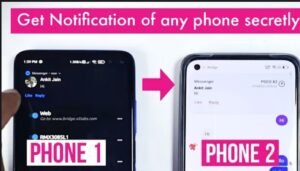
Remote Monitoring: Allows parents to access their child’s device camera and microphone, and view notifications from various apps, with the aim of ensuring their child’s safety and well-being.
Geofencing: Sends alerts when children enter or leave designated areas, providing parents with peace of mind and the ability to ensure their child’s safety.
These tools are designed to promote safe and responsible digital habits, fostering a positive and healthy online environment for children.
Mobile Control offers a comprehensive suite of features designed to enhance offline safety for children. Real-time location tracking and geofencing capabilities provide parents with peace of mind, as they are alerted when their children enter or leave designated areas.
Daily usage reports facilitate discussions about healthy habits by providing insights into screen time and app usage. Remote monitoring allows parents to check their child’s environment via the device’s camera and microphone, ensuring their safety in various locations.
These tools collectively empower parents to take a proactive approach to safeguarding their children’s offline well-being.

Mobile Control prioritizes online safety but does not directly block inappropriate offline content. However, it provides features to monitor and manage children’s digital activities, even when they are offline:
Real-Time Location Tracking:
– Allows parents to check their child’s real-time location via their device.
– Enables setting geographic boundaries to receive alerts when children enter or leave those areas.
– Provides location history to review previous locations visited by children.
Daily Usage Reports:
– Presents daily and weekly usage summaries of the child’s device, including screen time, frequently used applications, notifications, and cellular data consumption.
– Assists parents in tracking their child’s smartphone usage patterns.
App and Screen Time Management
This feature allows parents to set screen time limitations, lock the device for a specified period, or set an absolute time limit. It also enables parents to set specific usage limits for individual apps and disable all apps on the child’s phone simultaneously.
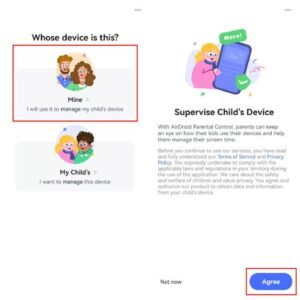
While mobile Control cannot directly block inappropriate offline content, its location tracking, usage reports, and time management features assist parents in monitoring and managing their child’s digital habits, even when they are not connected to the internet. This facilitates open communication and the teaching of healthy digital habits.
AirDroid Parental Control has certain limitations with its offline capabilities. While it provides real-time location tracking and daily usage reports, it lacks the ability to actively block inappropriate content when the device is offline.
Key limitations include:
No Content Filtering: The application cannot filter or block explicit content without an internet connection, limiting its effectiveness in offline scenarios.
Dependence on Internet for Alerts: Geofencing and alerts rely on a stable internet connection, which may not be available in areas with poor connectivity.
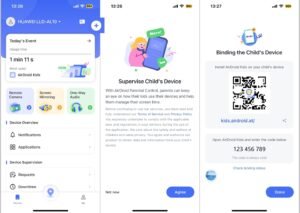
These factors can restrict comprehensive monitoring of offline activities.
To utilize Parental Control, adhere to the following procedure:
1. Installation of the Application:
– Download AirDroid Parental Control from the Google Play Store or Apple App Store onto your device.
2. Account Creation:
– Launch the application and register for an AirDroid account using your email address or a third-party account.
3. Linking the Child’s Device:
– Install AirDroid Kids on the device belonging to your child.
– Launch the application and confirm the connection using the code displayed on your parental application.
4. Permission Configuration:
– Grant the necessary permissions on the child’s device to ensure comprehensive functionality.

5. Management of Settings:
– Utilize the parental application to monitor screen time, track location, restrict applications, and examine activity reports.
AirDroid Parental Control offers several exclusive remote operations features to help parents monitor and manage their children’s device usage:
Real-Time Monitoring
Cast your child’s device screen to your phone in real-time to see what apps they are using and how frequently. 👀📱
Monitor social media, entertainment, and game apps to limit usage and prevent addiction. 🎮🚫
View the frequency and details of app notifications to spot potential threats.
App and Website Blocking
Block inappropriate browsers, games, and social apps on your child’s device.
Block websites and categories like games, gambling, and other unwanted content.
Set up phone access permissions to ensure your child can only access permitted apps. 🔒📱
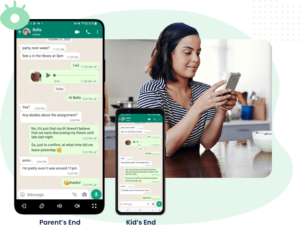
Screen Time Management 📱👪
Set up unique schedules to limit your child’s screen time. ⏰
Receive alerts when your child’s device battery is running low. 🔋
These features allow parents to monitor their children’s online activities, set healthy digital habits, and ensure their safety both online and offline. 🌐🛡️
Here are some other key features that are commonly included in remote monitoring systems:
1. Automated Notifications:
– Receive prompt alerts through email, SMS, or phone call when monitored conditions surpass predetermined thresholds or in the event of equipment failure.
– Personalize alert notifications based on the severity of the situation, time of day, and preferred contact methods.
2. Historical Trending and Reporting:
– Gather and store data from monitored points over time for thorough analysis and reporting purposes.
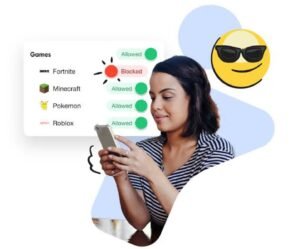
– Generate customized reports either on demand or on a scheduled basis.
– Visualize data using charts and graphs to effectively identify patterns and trends.
Scalability and Flexibility
Support for a wide range of monitored equipment and protocols to integrate with existing infrastructure. 🌐
Easily expand monitoring capabilities as needs change by adding new modules and sensors. 🔧
Cybersecurity Features
Secure communications with encryption and authentication. 🔒
User access controls and audit logging for compliance. 👮
Automatic software updates to address vulnerabilities. 🛡️
Ease of Use
Intuitive web-based interface for monitoring and control. 💻
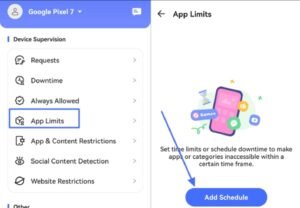
Customizable dashboards to display critical information. 📊
Automated discovery of connected devices. 🔍
These features help make remote monitoring systems powerful tools for maintaining visibility and control over critical infrastructure from anywhere. The specific capabilities will vary between vendors and product lines.
To configure different protocols for remote access, follow these steps:
Select a Remote Access Protocol: Choose from options like PPTP, L2TP, SSTP, or IKEv2 based on your security needs and compatibility. 🔐
Access Routing and Remote Access Service (RRAS): On a Windows Server, open the Routing and Remote Access Microsoft Management Console (MMC). 💻
Enable Desired Protocols:
Right-click on Ports and select Properties. ⚙️
Choose the protocol (e.g., L2TP or PPTP) and click Configure. 🛠️

✋️ Wait for few seconds
[su_button id=”download” url=”https://play.google.com/store/apps/details?id=com.sand.airdroidkidp” size=”6″ icon=”icon: arrow-circle-down” text_shadow=”0px 0px 0px #000000″]Click to Download App ✅️[/su_button]
Set the maximum number of ports and enable inbound connections. 🌐
Restart the Service: After making changes, restart the Routing and Remote Access service to apply the new settings. 🔄
Test the Configuration: Ensure the remote access is functioning correctly by attempting to connect using the configured protocol. 📱